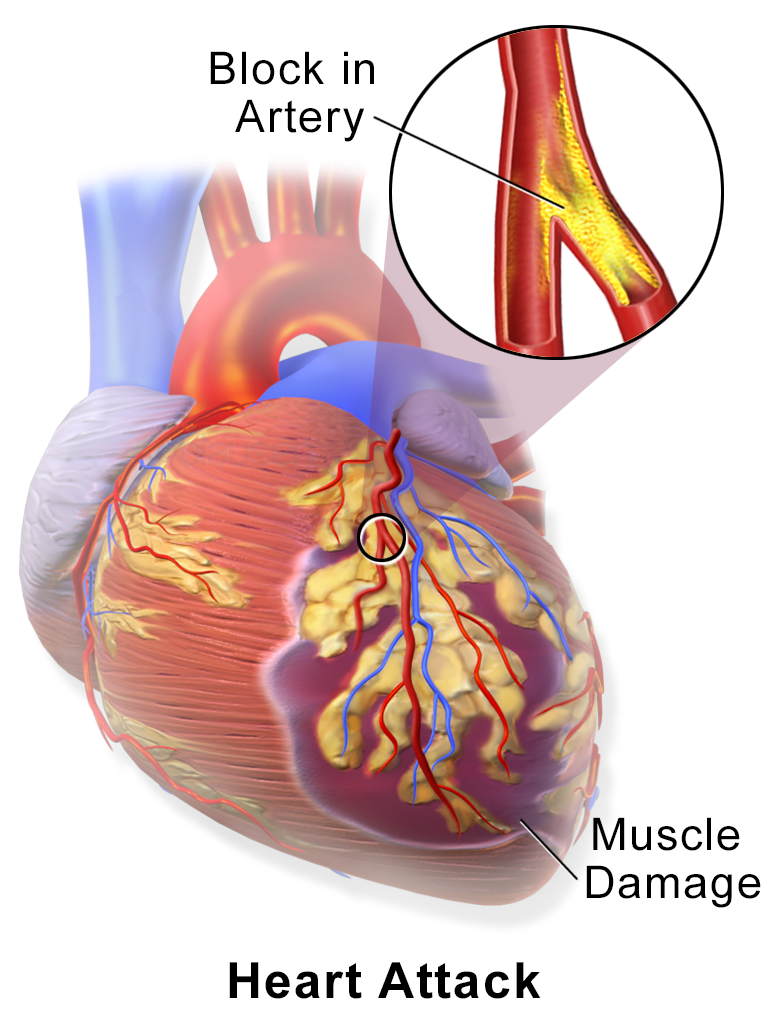The Intricacies of Heart Health and Understanding the Science of Coronary Artery Diseases
All parts of our bodies are important, and there are major organs in our bodies that are responsible for the proper functioning of the body, such as the brain, the lungs, the kidneys, liver, and the heart. You see, any minor or major problem with any of these organs is a major concern and the doctor would not say it is a minor condition, the condition would be treated as serious as the organ itself. In all of these, the most common cause of death is heart disease, leaving people lifeless either at the hospital, their homes or anywhere else.
The heart is one of the organs located at the thoracic cavity along side the lungs, and the kidneys. The heart doesn't sit all by itself, it is covered by the Pericardium which is a liquid filled sac that lubricates the heart and protect it. The heart itself has a muscle known as the myocardium. It is the part of the heart that does the pumping of blood by contracting. Before I continue, let me tell you that the myocardium of the heart is the part of the heart that gets damaged the most from heart diseases such as coronary heart disease as a result of plaques in the arteries caused by high cholesterol.
When we talk about coronary artery disease, it is as result of atherosclerosis (the buildup of plaque in the coronary artery). Arterial Plaque can start early in a person's life, and when I mean early, I means from teenage age. While this condition begins in the early ages of a person's life, we mostly do not worry about it until we are more older. This is because we do not put into consideration that plaque development is a gradual process which progresses gradually over the years, and most people do not experience any form of symptoms until the blood vessel is blocked or occluded.
Some people who have coronary artery disease can suffer myocardial infarction (heart attack) as their first symptom while others might experience milder symptoms like chest pain. This pain can increase when force is exerted upon the heart, and it relieves when the heart is a rest with less pain. People can also experience pain in the back, jaw, weakness, light headedness, cold, nausea, and shortness of breath. It is important that we know that if a person experiences symptoms either as a heart attack, or any other type of symptoms, then it means that the condition has progressed already.
You see,when a person start to have plaques in their blood vessels, one of the ways of preventing the plaque from progressing or one way of prevention a serious heart problem is by monitoring blood cholesterol level in the body and lowering this level by taking medications or by changing lifestyle activities. Let's not forget that while cholesterol is a big player, High blood pressure, smoking and diabetes are also a player in blood vessel plaques. These conditions are usually affected by diet, exercise and lifestyle activities.
Not all cholesterol are bad, but then certain cholesterol are Atherogenic as they cause atherosclerosis (plaque develeopment). LDL - cholesterols are atherogenic while HDL - cholesterol are anti-atherogenic. Atherosclerosis occur as a result of irritation or injury to the inside lining of the endothelium which is the inner membrane of the vessel. This injury or irritation leads to LDL cholesterol sticking to the walls of the vessels. When the LDL - cholesterols are oxidized, they cause macrophages to attack the LDL which would lead to a plaque.
Another cause of plaques is high blood pressure. Normally, the blood pressure should be at 120/80 and having blood pressure higher than this can increase the pressure at which the blood is being pumped through the vessels which could irritate the inner lining of the endothelium, causing atherogenic cholesterols to stick to the lining of the vessels.
Smoking is another factor that can cause irritation to the lining of the endothelium. This irritation is chemical and not mechanical unlike in the case of high blood pressure, and this leads to irritations causing plaques to stick to the vessels. Diabetes is also another factor that can lead to coronary artery diseases.
We cannot over emphasize the importance of checking diet and doing exercise when it comes to improving cholesterol, lowering blood pressure, and improving insulin sensitivity with diabetes.
Reference
https://www.cdc.gov/heartdisease/coronary_ad.htm
https://www.nhlbi.nih.gov/health/coronary-heart-disease
https://www.heart.org/en/health-topics/consumer-healthcare/what-is-cardiovascular-disease/coronary-artery-disease
https://www.nhs.uk/conditions/coronary-heart-disease/
https://www.ahajournals.org/doi/10.1161/CIRCULATIONAHA.122.061010
https://www.ncbi.nlm.nih.gov/pmc/articles/PMC9068326/
https://www.ncbi.nlm.nih.gov/pmc/articles/PMC4672945/


Thanks for your contribution to the STEMsocial community. Feel free to join us on discord to get to know the rest of us!
Please consider delegating to the @stemsocial account (85% of the curation rewards are returned).
Thanks for including @stemsocial as a beneficiary, which gives you stronger support.